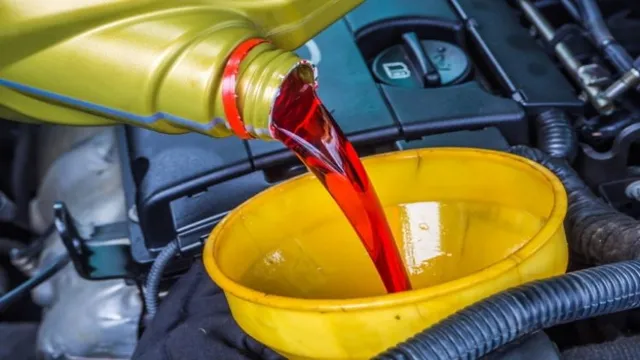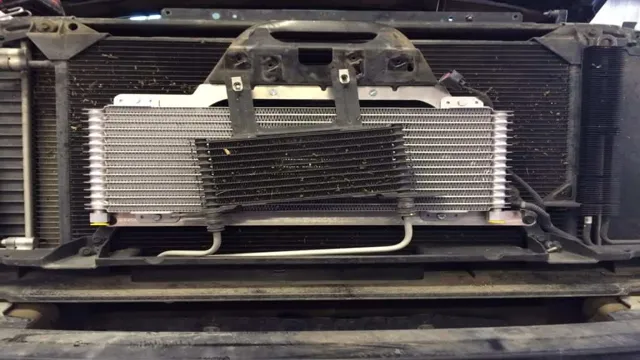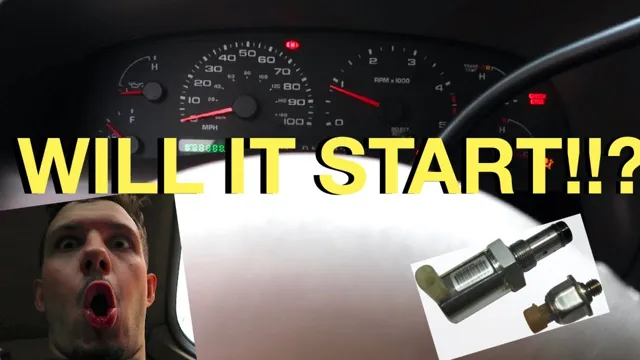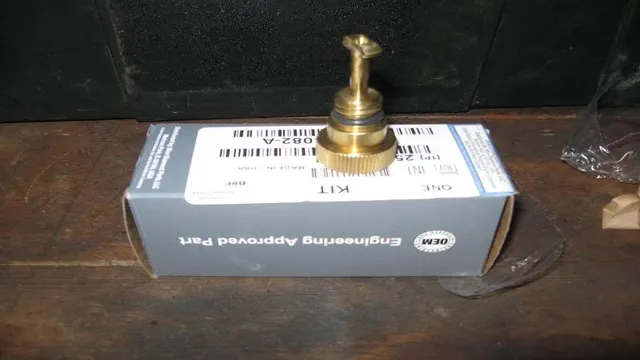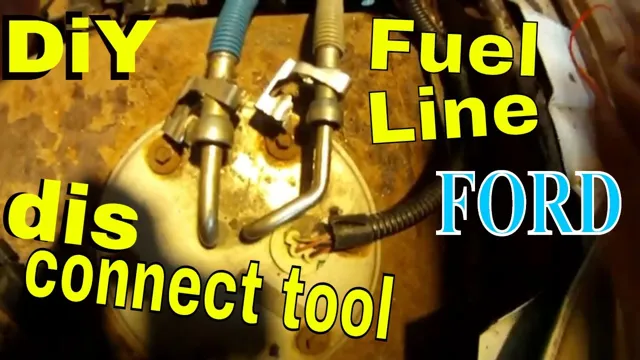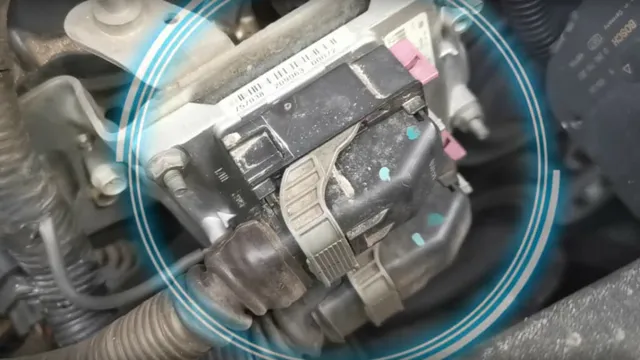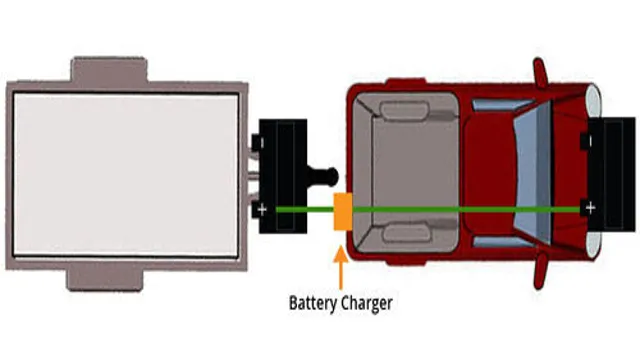Step-by-Step Guide: How to Flush Transmission Fluid from Torque Converter Like a Pro
Have you ever noticed that your vehicle’s transmission is not working smoothly? If so, it might be time to flush the transmission fluid from the torque converter. The torque converter is a crucial component of the transmission system that transfers power from the engine to the wheels. It’s essential to keep it working smoothly to avoid expensive repairs, but how exactly do you flush the fluid from it? Flushing the transmission fluid from the torque converter is a complex process that requires some skill and knowledge.
This process involves removing old, contaminated fluid and replacing it with fresh, clean fluid. Some people may attempt this process at home, but it’s important to consult a professional to avoid damaging your vehicle further. Regular maintenance of the transmission system is essential to keep your vehicle running smoothly.
It’s crucial to take care of small problems before they turn into bigger ones. A faulty torque converter can lead to transmission failure, which can be expensive to repair. In conclusion, flushing the transmission fluid from the torque converter is an essential task that should not be neglected.
Regular maintenance is essential to keep your vehicle running smoothly and avoid costly repairs down the line. If you suspect that your transmission is not working correctly, it’s essential to seek help from a professional mechanic to avoid any further damage to your vehicle.
What You Need
If you’re wondering how to flush transmission fluid from the torque converter, you’ll first need a few tools. You’ll need a drain pan, a transmission fluid funnel, a new transmission filter, and the specific type of transmission fluid recommended for your vehicle. Additionally, you’ll need to have access to your vehicle’s manual or online resources to ensure you are following the correct process for your make and model.
It may also be helpful to have an assistant to help you with the flushing process, as it can be a bit messy and require some coordination. Once you have everything you need, you can begin the process of flushing out the old transmission fluid and replacing it with new fluid to keep your transmission running smoothly. With proper maintenance, your torque converter and transmission can last for many years without any significant issues.
Transmission fluid
Transmission fluid is a vital component of your vehicle’s transmission system. It is responsible for maintaining optimal performance and longevity of the transmission by lubricating the moving parts, providing hydraulic pressure, and cooling the system. To ensure your transmission runs smoothly, it’s essential to know what type of fluid your vehicle requires.
Most transmissions need specific types of fluid that are not interchangeable, so it’s crucial to use the right one. You can check your vehicle’s manual or consult with a mechanic to determine the correct type of transmission fluid for your car. It’s also essential to keep an eye on the fluid level and replace it according to the manufacturer’s recommendations.
Neglecting to do so can lead to transmission failure, costly repairs or even rendering the vehicle inoperable. So, if you want to keep your car running smoothly, taking care of the transmission fluid is a must.
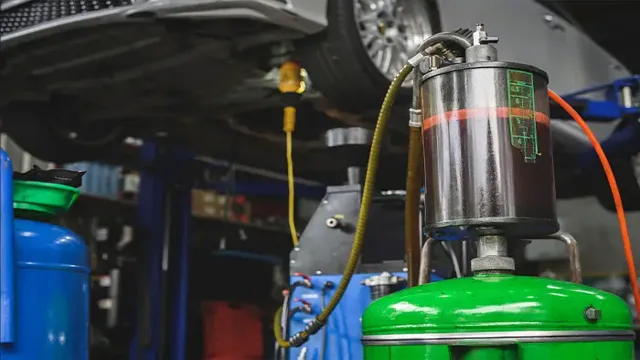
Wrench or socket set
When it comes to working on your car or doing any mechanical repairs around your home, having the right tools is essential. One of the most debated questions is whether to use a wrench or socket set. Both can be used to tighten or loosen bolts and nuts, but which one should you use? Well, it depends on the job you are doing.
A wrench is ideal for jobs where you need more leverage, and you have plenty of space to work with. Conversely, a socket set is ideal for jobs where you have limited space to work with and you need to reach bolts that are recessed. The versatility of a socket set makes it a great option for most jobs.
Now, let’s talk about the difference between the two. A wrench has an open end and a closed end. The open end is used to slide over the bolt or nut, and the closed end is for tightening or loosening.
Wrenches come in different sizes, and you need the right size for the job you are doing. On the other hand, a socket set has a ratchet and interchangeable sockets. The ratchet allows you to tighten or loosen bolts and nuts without the need to reset your grip.
The interchangeable sockets also come in different sizes, which makes them more versatile than a wrench. In conclusion, whether to use a wrench or socket set depends on the job you are doing. Both have their advantages, and it is entirely up to you to decide which one to use.
However, keep in mind that a socket set is generally more versatile and easier to use in most cases. So, if you don’t have one yet, investing in a socket set might be a wise decision.
New transmission filter
If you’re planning to change your transmission filter, there are a few things you need to know to make the process a success. First, you need to locate where the filter is situated, and to do this, you need to consult your owner’s manual for the exact location of the filter and how many filters you have. Once you have that information, gather the tools you will need to remove the filter, such as a socket wrench, pliers, and a drain pan.
You’ll also need a new transmission filter, which you should purchase from a reputable manufacturer. Never compromise on quality, as using a subpar filter could lead to future problems with your transmission. When selecting a filter, match the part number to ensure that it fits your vehicle correctly.
Changing the transmission filter can seem daunting, but this simple maintenance task can help prolong the life of your vehicle. By doing so, you can avoid costly repairs down the line and maintain your vehicle in tip-top condition. So go ahead and replace your transmission filter; your vehicle will thank you!
Transmission fluid pan
If you are experiencing issues with your transmission, it might be time to check the transmission fluid pan. This pan can be found at the bottom of your transmission and plays a vital role in keeping your transmission running smoothly. When you check the transmission fluid, it is crucial to inspect the pan to see if there are any signs of wear or damage.
If the pan is rusted or dented, it could indicate a leak in your transmission fluid. This can cause your transmission to overheat, which can damage the internal parts and result in costly repairs. Therefore, it is important to make sure that you have the necessary tools, such as a drain pan and a torque wrench, before attempting to check and replace the transmission fluid pan.
By doing so, you can prevent further damage to your transmission and avoid extensive repairs in the future.
Preparing the Vehicle
When it comes to flushing transmission fluid from a torque converter, it’s important to take the proper steps to prepare your vehicle. First, make sure you’re on level ground and that the engine is cool. You’ll want to jack up the car and secure it with jack stands, making sure it’s stable before beginning any work.
You’ll also need to locate the transmission pan and remove it, as well as the old filter. This will allow you to access the torque converter and drain any fluid that’s still inside. Once you have the pan and filter off, you can use a transmission flush machine to send new fluid through the torque converter and flush out any old fluid.
It’s important to follow the manufacturer’s instructions for the flush machine and to use the right type of fluid for your specific vehicle. By properly preparing your vehicle for a transmission flush, you can ensure a successful and effective process that will keep your vehicle running smoothly.
Warm up the car’s engine
Before hitting the road, it is important to prepare the vehicle for optimal performance. One crucial aspect of preparing your car is making sure that the engine has warmed up before driving. This is especially important during cold weather conditions when the engine is susceptible to damage if not warmed up properly.
Starting a cold engine and immediately driving can lead to increased friction and wear and tear on the engine’s components. To warm up the engine, allow it to idle for a few minutes before driving. This gives the oil time to circulate through the engine and lubricate its parts, ensuring a smoother start and better performance.
By taking the extra time to warm up the engine, you can avoid potential damage and prolong the life of your vehicle. Don’t forget to incorporate this simple step in your pre-driving routine to ensure that the car’s engine is properly warmed up and ready to go.
Raise the vehicle into the air
When preparing to work on your vehicle, it’s essential to raise it into the air safely and securely. This can be done using a few different methods, such as a hydraulic jack, floor jack, or jack stands. However, before you do anything, make sure the vehicle is on a flat surface and in park with the emergency brake engaged.
Next, locate the factory recommended jacking points for your vehicle and place the jack there. Once raised, place the jack stands under the recommended support points and slowly lower the vehicle onto them. It’s important never to rely solely on the jack to support the weight of the vehicle while working on it.
Instead, always use jack stands as an added layer of safety. Taking these steps will ensure a secure foundation for the work that needs to be done on your car or truck, making the process both safer and easier.
Locate the torque converter
As you get started with replacing your torque converter, the first step is to prepare the vehicle. This means finding a safe and well-lit area to work in, potentially using a jack to lift the car off the ground, and making sure you have all the necessary tools. Once you have the vehicle ready, it’s time to locate the torque converter itself.
This can typically be found attached to the flexplate, which is located between the engine and the transmission. The converter looks like a round, metal component and can usually be accessed through the inspection cover on the bottom of the transmission. Once you’ve located the converter, you can take the necessary steps to remove and replace it.
Make sure to take note of any bolts or other components that are attached to the converter before removing it, and be careful not to damage any surrounding parts when taking it out. With the old converter removed, you can then install the new one and reattach any components that were previously removed. With a bit of patience and some basic mechanical skills, replacing your torque converter can be a manageable project to take on.
Removing Old Fluid
If you’re wondering how to flush transmission fluid from torque converter, the first step is to remove old fluid from your vehicle’s transmission system. This is a critical process that requires attention to detail, as old transmission fluid can cause damage to your torque converter and other vital components. To get started, locate the transmission fluid dipstick and remove it to assess the fluid’s current condition.
If it appears dark, dirty, or smells burnt, it’s time for a flush. Next, locate the transmission fluid pan and drain the old fluid using a wrench or socket set. With the pan removed, discard the old filter and replace it with a new one.
Then, reinstall the pan and fill the transmission system with fresh fluid according to your vehicle’s manufacturer specifications. It’s essential to ensure that the fluid level is correct after a flush, so double-check with the dipstick. A proper transmission fluid flush can extend your vehicle’s lifespan and boost its performance while avoiding costly repairs down the road.
Remove transmission pan
To remove old transmission fluid, the first step is to remove the transmission pan. Doing so will allow all of the old fluid to drain out and make room for new, clean fluid. Before you start, make sure you have all the necessary tools, including a jack, jack stands, and a socket wrench.
First, jack up the vehicle and secure it on jack stands. Then, locate the transmission pan and the bolts that hold it in place. Use the socket wrench to remove all of the bolts, but be careful not to damage the pan itself.
Once all the bolts are removed, carefully lower the pan and allow the old fluid to drain out. Be sure to change the gasket or seal before refilling with new fluid. This simple step can greatly improve your vehicle’s performance and longevity.
Drain the Old Fluid
When it comes to changing the fluid in your car, draining the old fluid is a crucial step. This process involves removing the old fluid from the system, which is important for several reasons. For one, old fluid can be contaminated with dirt and debris, which can cause damage to your car over time.
Additionally, old fluid can become less effective at lubricating and cooling the various parts of your car’s engine and transmission, which can lead to increased wear and tear. To drain the old fluid, you’ll need to locate the drain plug for the fluid reservoir and carefully let the old fluid drain out. Make sure to catch the old fluid in a container so that you can dispose of it properly.
Once the fluid has finished draining, you can move onto the next step of the fluid change process. Remember to always refer to the manufacturer’s instructions or consult with a professional mechanic if you’re unsure about how to perform this step.
Replace Old Filter
When it comes to changing the oil filter in your car, the first step is to remove the old filter. This may seem like a simple task, but it can actually be quite tricky, especially if the filter has been on for a long time. Before you get started, you’ll need to gather a few essential tools, including a wrench, some rags, and a drain pan.
Once you have your tools in hand, locate the oil filter and use the wrench to loosen it. Be careful not to damage the filter or spill oil everywhere. Once the filter is loose, you should be able to twist it off by hand.
However, if it’s stuck, you may need to use a filter removal tool to get it off. Once you’ve removed the old filter, be sure to dispose of it properly and clean up any spills or drips with your rags. With the old filter out of the way, you’re ready to install a new one and start fresh with clean oil in your engine.
Remember to always check your oil level after changing the filter to ensure it’s at the proper level for optimal vehicle performance.
Adding New Fluid
If you’re wondering how to flush transmission fluid from your torque converter, the process can seem a bit daunting at first. However, it’s a crucial step in maintaining the health and longevity of your vehicle’s transmission system. First, you’ll need to locate the transmission fluid pan and drain any existing fluid from it.
Next, remove the transmission filter and clean any debris or buildup from it. After that, you can reinstall the filter and refill the system with fresh fluid. It’s important to use the correct type of fluid for your specific vehicle to prevent damage to the transmission.
Once the system is refilled, you may need to run the vehicle for a few minutes to circulate the new fluid throughout the system and ensure proper lubrication. By regularly flushing and replacing your transmission fluid, you can help avoid transmission problems and extend the life of your vehicle. So why not take the time to add some new fluid to your torque converter today?
Replace transmission pan
If you need to replace your transmission pan, it’s also a good time to add new fluid. Over time, transmission fluid can become dirty or old, which can negatively affect your vehicle’s performance. Before starting the process, make sure you have the right type of transmission fluid for your car.
Consult your owner’s manual or a mechanic if you’re unsure. You’ll need a transmission jack to lift the car and remove the pan. Once you’ve drained the old fluid, clean the pan and magnet thoroughly.
Then, replace the filter and pan gasket before reinstalling the pan with the correct torque specs. Add the new fluid slowly through the fill tube until it reaches the right level. It’s important to not overfill or underfill the transmission, as this can cause damage.
With fresh fluid and a new pan, your transmission should perform better and last longer.
Add new transmission fluid
Adding new transmission fluid is an essential maintenance task for any vehicle owner. Over time, the fluid in your transmission can become contaminated, causing shifting issues, overheating, and other problems. To add new fluid, you’ll need to locate the transmission dipstick and remove it, being careful not to introduce any dirt or debris into the transmission.
Next, use a funnel to add the correct type and amount of fluid, which can be found in your vehicle’s owner’s manual. It’s important not to overfill your transmission, as this can also cause issues. After adding the fluid, be sure to check the dipstick again to ensure it’s at the correct level.
With regular fluid changes, your transmission can operate smoothly and efficiently, providing better performance and longevity for your vehicle.
Testing Your Work
Flushing the transmission fluid from the torque converter may seem like a daunting task but it doesn’t have to be. First, locate the transmission fluid cooler lines, which are typically located near the radiator. Next, disconnect the lines and attach a clear hose to the cooler outlet line.
Start the engine and let it run until the transmission fluid starts flowing through the tubing. Once the fluid starts running clear, turn off the engine and disconnect the hose. It’s important to refill the transmission fluid to the correct level after completing this process.
Flushing your transmission fluid and torque converter is an important maintenance task that helps to ensure the longevity of your vehicle’s transmission system. By doing this regularly, you can prevent unnecessary wear and tear, extend the life of your vehicle, and save money on repairs in the long run.
Start the engine and test drive
Once you have fixed everything under the hood and made sure all the components are in their proper places, it’s time to start the engine and take it for a test drive. This is a crucial part of the process as it allows you to check if everything is working as it should. Before you start driving, make sure you do a thorough visual inspection of the car to ensure there are no leaks, and all signals and lights are functioning correctly.
If you detect any issues, address them before you begin driving. Once you’re on the road, evaluate everything, from the brakes to the acceleration, to make sure that everything is smooth and responsive. Pay attention to any odd noises or vibrations as well, as these can be early warning signs of bigger problems in the future.
In conclusion, testing your work is essential to ensure that your car is back to its optimal condition. So take your time and be thorough in your evaluation to avoid any faults in the future.
Check for leaks
When you’ve finished repairing a pipeline, it’s important to check for leaks to ensure that your work has been successful. One way to do this is by using a hydrostatic test, which involves filling the pipeline with water and pressurizing it to a level above its normal operating pressure for a set period of time. If there are no signs of leakage during this test, you can be confident that your repairs were effective.
However, if leaks are detected, you’ll need to locate and address them before the pipeline can be put back into service. It’s crucial to thoroughly test your work to avoid any future issues that may arise from undetected leaks. Using the hydrostatic test to check for leaks is a time-tested and reliable method for ensuring that your repairs have been successful.
By pressurizing the pipeline above its normal operating pressure, you’re putting it under a significant amount of stress, which can reveal any weak points or breaches in the system. This test is particularly useful for detecting small leaks or cracks that may not be visible to the naked eye, and it can help you identify where repairs are needed. It’s essential to follow industry standards and best practices when conducting a hydrostatic test to ensure accuracy and safety.
By taking the time to thoroughly test your work, you’ll be able to avoid any costly and dangerous issues that may arise from undiscovered leaks.
How Often to Flush Transmission Fluid
If you’re wondering how often to flush transmission fluid from your torque converter, it’s recommended to do it every 30,000 to 60,000 miles. Flushing your transmission fluid helps to maintain its performance and prevent damage caused by buildup and contamination. However, it’s important to note that not all vehicles have the same interval requirements.
It’s best to consult your vehicle’s owner manual or an experienced mechanic for the specific flushing interval for your car. Additionally, if you notice any signs of transmission problems such as slipping or difficulty shifting gears, it’s best to have it checked out and possibly flushed sooner rather than later. Overall, flushing your transmission fluid regularly can help extend the life of your transmission and keep your car running smoothly.
Manufacturer guidelines
If you’re wondering how often you should flush the transmission fluid in your car, the answer may vary based on the manufacturer guidelines. Different manufacturers have different recommendations, so it’s important to check your owner’s manual to find out what your specific car requires. Some manufacturers suggest flushing the transmission fluid every 30,000 to 60,000 miles, while others may recommend waiting until 100,000 miles or more.
It’s important to follow these guidelines to keep your car running smoothly and prevent any potential issues down the line. Neglecting to flush the transmission fluid can result in transmission failure, potentially causing expensive repairs and downtime. So, make sure to stay on top of your car’s maintenance schedule and follow the manufacturer’s recommendations to ensure the longevity of your vehicle.
Remember, preventing issues is always easier and cheaper than fixing them after the fact.
Signs of needing a flush
When it comes to maintaining your transmission, a regular flush can be instrumental in extending the life of your vehicle. But how often should you flush your transmission fluid? While it varies from car to car, experts generally recommend a transmission flush every 30,000 to 60,000 miles. Signs that your vehicle may need a transmission flush include dirty or discolored fluid, strange noises or vibrations, or if the gears slip or have difficulty shifting.
Neglecting to schedule a flush can result in significant damage to your transmission, and potentially lead to costly repairs down the line. By staying proactive with your vehicle maintenance and knowing the signs of when to flush, you can keep your car running smoothly for years to come.
Conclusion
As with any car maintenance task, flushing transmission fluid from a torque converter may seem daunting at first, but with the right tools and a little know-how, it can be a breeze. Remember to always consult your vehicle’s manual and take safety precautions when working with hot fluids. Just like a healthy diet and exercise keep your body running smoothly, clean transmission fluid and a healthy torque converter will keep your car performing at its best for years to come.
So don’t wait until your transmission is sputtering like a bad joke – take the initiative and give it the TLC it deserves with a good old-fashioned flush.”
FAQs
What is the importance of flushing transmission fluid from a torque converter?
Flushing transmission fluid from a torque converter helps to remove contaminated fluid and prolong the life of the transmission.
How often should transmission fluid be flushed from a torque converter?
It is recommended to flush conventional automatic transmission fluid and the torque converter every 30,000 to 60,000 miles. Synthetic fluids may be flushed every 60,000 to 100,000 miles.
What are the signs that your torque converter needs a fluid flush?
The signs of a torque converter needing a fluid flush may include slipping gears, rough shifting and unusual noises coming from the transmission.
Can you flush the transmission fluid and torque converter yourself?
While it is possible to flush the transmission fluid and torque converter yourself, it is recommended to have a professional mechanic do it to ensure proper flushing and disposal of the contaminated fluid.

